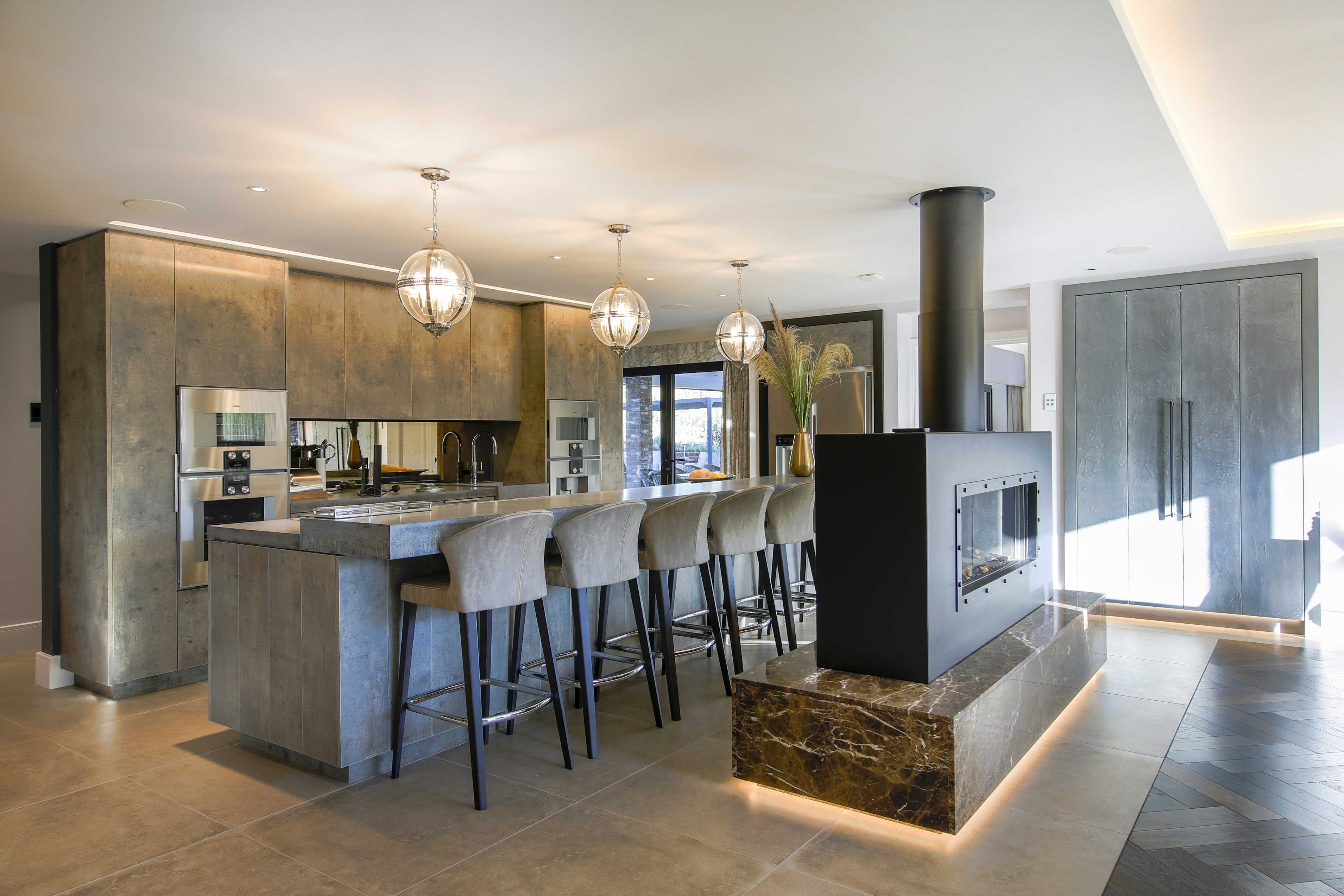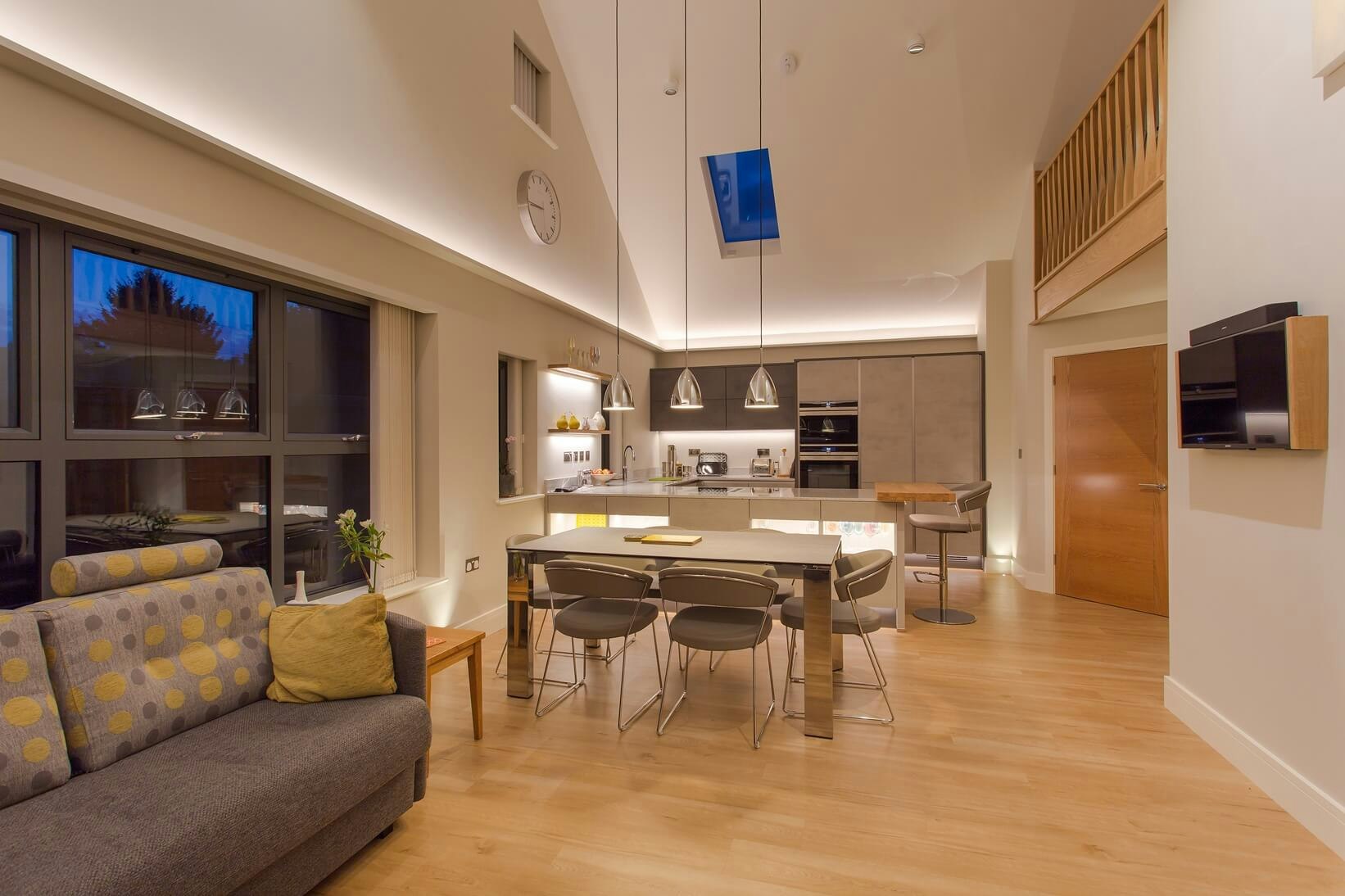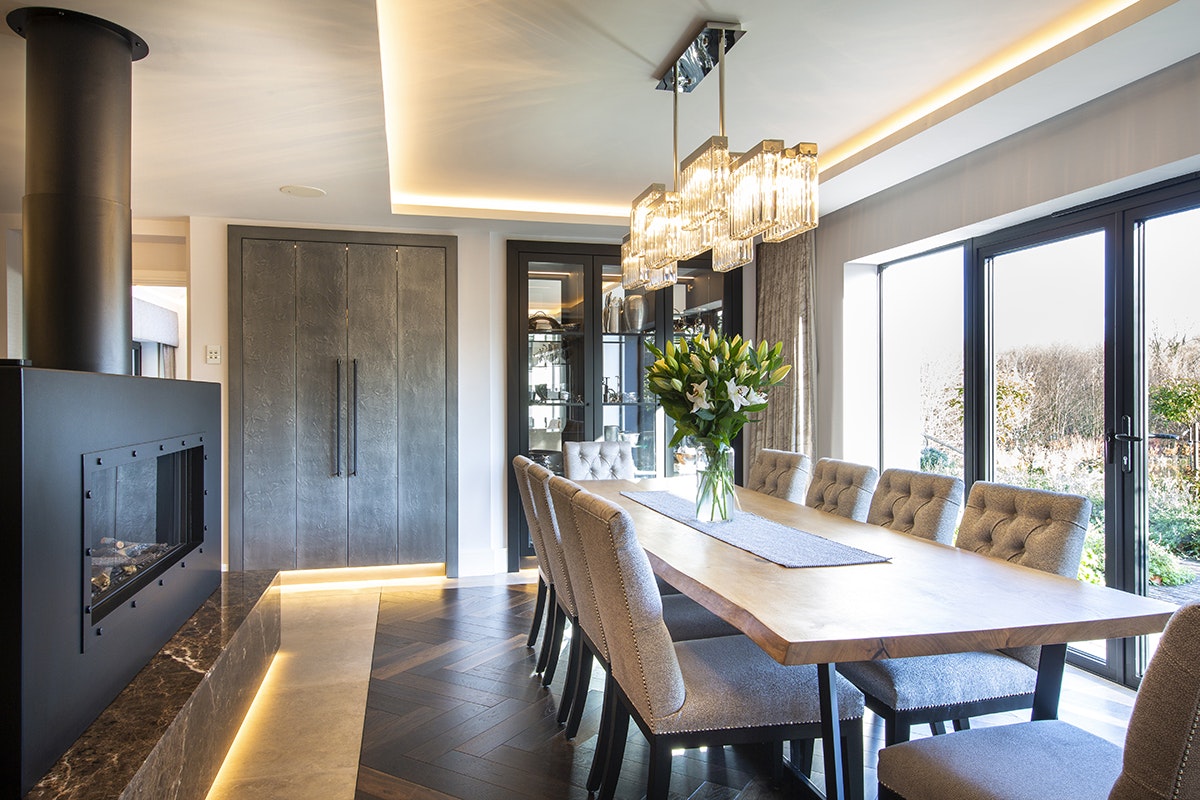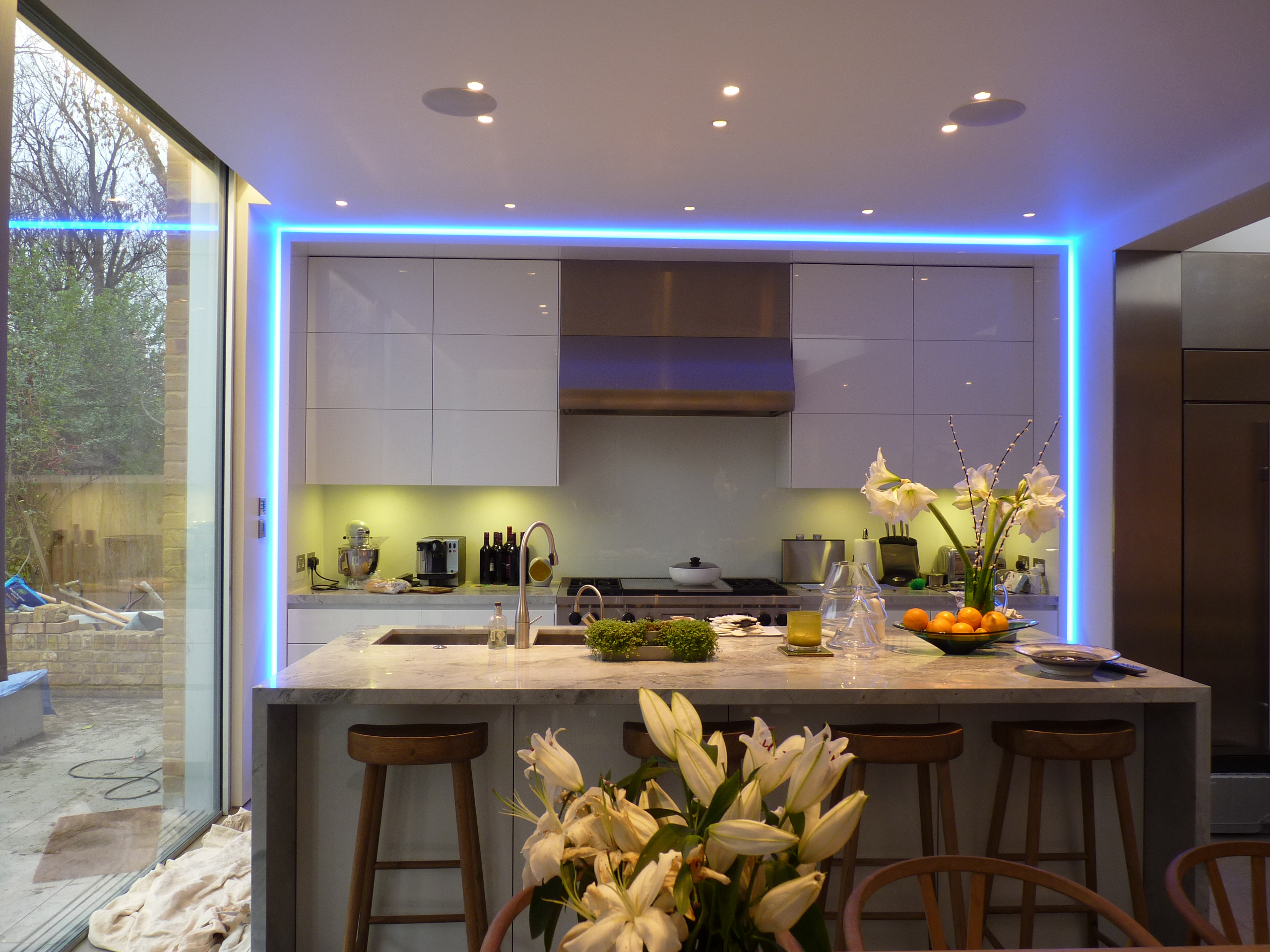Blog
Lighting Design Tips: How To Light Your Kitchen Successfully

Author: Greg Devenish
Your kitchen is arguably the most important room in your home, especially now most of us eat, socialise, and relax in there too. Lighting plays a huge part in how we feel when conducting these activities, and a superior kitchen lighting design needs to be flexible in order to achieve a positive outcome. There are several ways to incorporate kitchen lighting design, and getting is right will highlight stand-out features and help boost natural light.
In this article, we explore 4 ways lighting design can be used to create a practical and stunning kitchen for your home.
1. Introduce low-level lighting
Low-level lighting can be used to create a warm glow in your kitchen and adds additional layers to your lighting scheme. When used towards the bottom of kitchen islands, fireplaces, and other stand-out features, low-level lighting can produce remarkable floating effects. This also works extremely well underneath small down stands (overhangs) to create clever but delicate touches to your kitchen.
For a seamless finish, a continuous strip of LED lighting is typically used. This requires a driver in order to power the fitting effectively. Drivers have a similar purpose to transformers; they step down the mains power voltage to the voltage required by the fitting. Drivers have a maximum distance they can be sited from the fitting they drive, so locations and access for maintenance must be considered at an early stage in the project. Having said that, some LEDs already include an integrated driver within the bulb, making the installation a more time and cost efficient.

2. Experiment with colour
Want to add a touch of colour to your kitchen without making any permanent changes? Coloured lighting might just be the way to go. Especially for white kitchens. Utilising coloured lighting in your kitchen adds a layer of interest and switches up the feel of your space. A little colour goes a long way though, so remember to use it carefully.
When it comes to adding colour to your kitchen with lights, there are two ways you can go about it. The cheap and cheerful route, consisting of single colour LEDs (usually blue, red or green), or for a more reliable and flexible option, an integrated lighting control system is the way forward. This enables you to cycle through and choose from an entire spectrum of colours using your smart phone.
3. Keep your lighting simple
Many make the mistake of overcomplicating their lighting scheme, but keeping it simple is often the most effective solution. That doesn’t mean your lighting scheme has to be boring, though. For example, use precisely positioned spotlights for effective task lighting, clean looking pendant lights for ambient lighting, and even introduce colourful LEDs for a splash of accent lighting.

4. Create a high-level wash
For kitchens with tall ceilings, it’s a great idea to showcase the height along with any architectural features with lighting. Use a strip of LEDs around the inside of a recessed ceiling, or place linear lights on top of your bank of cabinets to create a striking up-lit effect.

Kitchen lighting design from the experts
There are many ways you can use lighting to create stunning effects in your kitchen. If you’re looking to transform the space you cook, eat and relax in, contact us at Hampshire Light today and receive a complimentary design consultation.
